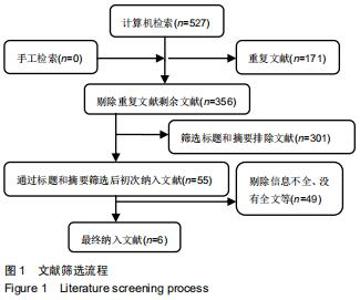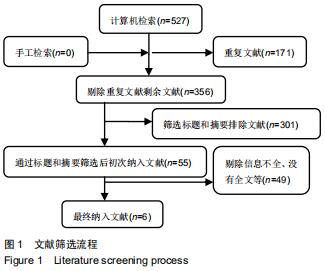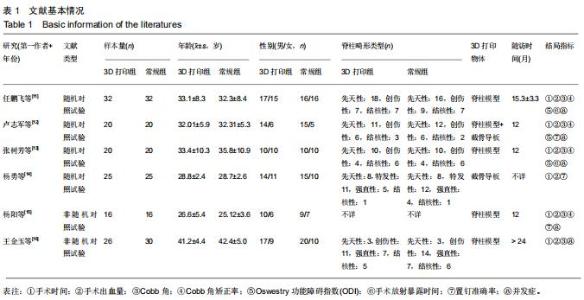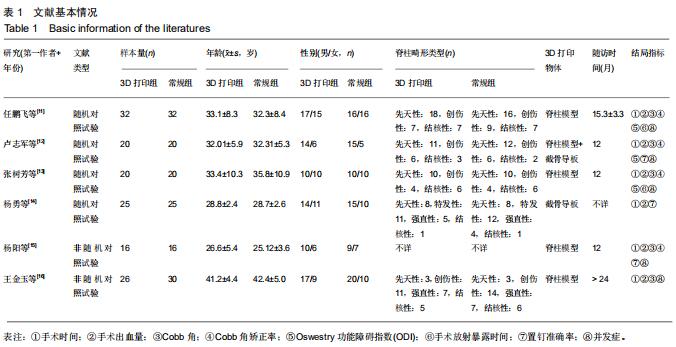|
[1] 陆晓生,黄湄景,赵劲民.脊柱畸形手术治疗现状与方向[J].中国矫形外科杂志,2015,23(3):239-241.
[2] 周驰雨,张莹,初同伟.计算机辅助术前矫正模型设计结合3D打印技术在脊柱畸形治疗中的应用[J].中国医学物理学杂志,2019, 36(2):185-189.
[3] 路闯,李辉,祝文钢,等.后路选择性全脊椎截骨术治疗胸腰椎陈旧性骨折伴后凸畸形[J].中国矫形外科杂志,2018,26(17): 1627-1629.
[4] 韩猛,刘磊,刘光旺,等.后路椎板切除截骨矫形内固定治疗骨质疏松性胸腰段后凸畸形的疗效观察[J].中国骨与关节损伤杂志, 2017,32(9):909-912.
[5] TOOMBS C, BARON L, SHAH S, et al. Quality of life Improvement following surgery in adolescent spinal deformity patients: a comparison between scheuermann kyphosis and adolescent idiopathic scoliosis. Spine Deformity. 2018;6(6): 676-683.
[6] 闫煌,邱勇,朱泽章,等.脊柱截骨矫形技术治疗成人复杂脊柱侧后凸畸形的疗效及安全性的前瞻性观察[J].中国脊柱脊髓杂志, 2016,26(1):4-10.
[7] 王春国,胡文浩,李静,等.治疗脊柱畸形常用后路截骨术术式研究进展[J].脊柱外科杂志,2018,16(6):368-374, 383.
[8] 赵维彪,何子微,李季,等.3D打印导板在以SuperPATH技术行老年髋关节置换中的应用价值:回顾性研究和文献检索证据分析[J].中国组织工程研究,2020,24(9):1324-1330.
[9] XIONG L, LI X, LI H, et al. The efficacy of 3D printing-assisted surgery for traumatic fracture: a meta-analysis. Postgrad Med J. 2019;95(1126):414-419.
[10] BAI J, WANG Y, ZHANG P, et al. Efficacy and safety of 3D print-assisted surgery for the treatment of pilon fractures: a meta-analysis of randomized controlled trials. J Orthop Surg Res. 2018;13(1):283.
[11] 任鹏飞,矫健航,张善勇,等.3D打印脊柱后凸模型体外模拟截骨在脊柱后凸畸形矫形手术的应用效果分析[J].中华骨与关节外科杂志,2019,12(6):410-413.
[12] 卢志军,陈荣春,郭朝阳,等.3D打印定向截骨导板治疗脊柱畸形的临床效果[J].中国矫形外科杂志,2018,26(17):1574-1579.
[13] 张树芳,钟红发,陈荣春,等.基于3D打印模型确定经椎弓根椎体截骨治疗脊柱后凸畸形的最佳选择[J].中国组织工程研究,2016, 20(53):7966-7972.
[14] 杨勇.脊柱畸形矫正手术中应用计算机辅助技术结合3D打印模板的价值分析[J].中国伤残医学,2017,25(17):16-17.
[15] 杨阳,刘林,薛文,等.3D打印技术在重度僵硬性脊柱侧后凸畸形截骨矫形治疗中的辅助作用[J].中国组织工程研究,2018,22(31): 4959-4964.
[16] 王金玉,周政纲,王思哲,等.3D打印技术在经椎弓根椎体截骨术治疗脊柱后凸畸形中的应用[J].中国骨与关节损伤杂志,2019, 34(5):496-498.
[17] QIAN BP, WANG XH, QIU Y, et al. The influence of closing-opening wedge osteotomy on sagittal balance in thoracolumbar kyphosis secondary to ankylosing spondylitis: a comparison with closing wedge osteotomy. Spine (Phila Pa1976). 2012;37(16):1415-1423.
[18] 陈亮,桑莉莉,高大伟,等.基于3D打印个性化手术导航模块的微创锥形截骨治疗桡骨上段旋转畸形[J].中华肩肘外科电子杂志, 2018,6(2):151-153.
[19] 华文彬,杨操,郜勇,等.顶椎楔形截骨术治疗重度僵硬型脊柱侧后凸畸形[J].脊柱外科杂志,2018,16(6):331-336.
[20] 黄复铭,樊仕才.3D打印技术辅助治疗骨盆髋臼骨折的研究进展[J].中国临床解剖学杂志,2019,37(3):347-350.
[21] TACK P, VICTOR J, GEMMEL P, et al. 3D-printing techniques in a medical setting: a systematic literature review. Biomed Eng Online. 2016;15:115.
[22] BROUWERS L, TEUTELINK A, VAN TILBORG F, et al. Validation study of 3D-printed anatomical models using 2 PLA printers for preoperative planning in trauma surgery: a human cadaver study. Eur J Trauma Emerg Surg. 2019;45(6): 1013-1020.
[23] PIJPKER PAJ, KUIJLEN JMA, KRAEIMA J, et al. Three-dimensional planning and use of individualized osteotomy-guiding templates for surgical correction of kyphoscoliosis: a technical case report. World Neurosurg. 2018;(119):113-117.
[24] 汪松,潘彬,李浩,等.3D打印技术辅助治疗骨盆骨折临床疗效的Meta分析[J].中华创伤骨科杂志,2019,21(1):44-49.
[25] 袁德超,吴超,邓佳燕,等.3D打印仿真腰椎手术模型的构建与评估[J].中国组织工程研究,2020,24(12):1870-1874.
[26] TAN LA, YERNENI K, TUCHMAN A, et al. Utilization of the 3D-printed spine model for freehand pedicle screw placement in complex spinal deformity correction. J Spine Surg. 2018; 4(2):319-327.
[27] 蒋维利,牛国旗,周功,等.3D打印技术辅助成人脊柱侧后凸畸形的术前规划及应用价值[J].中国骨伤,2020,33(2):99-105.
[28] 闻志靖,高正超,卢腾,等.导航模板辅助脊柱椎弓根内固定术与传统椎弓根内固定术手术效果比较的Meta分析[J].中国骨伤,2018, 31(11):1069-1076.
|



















